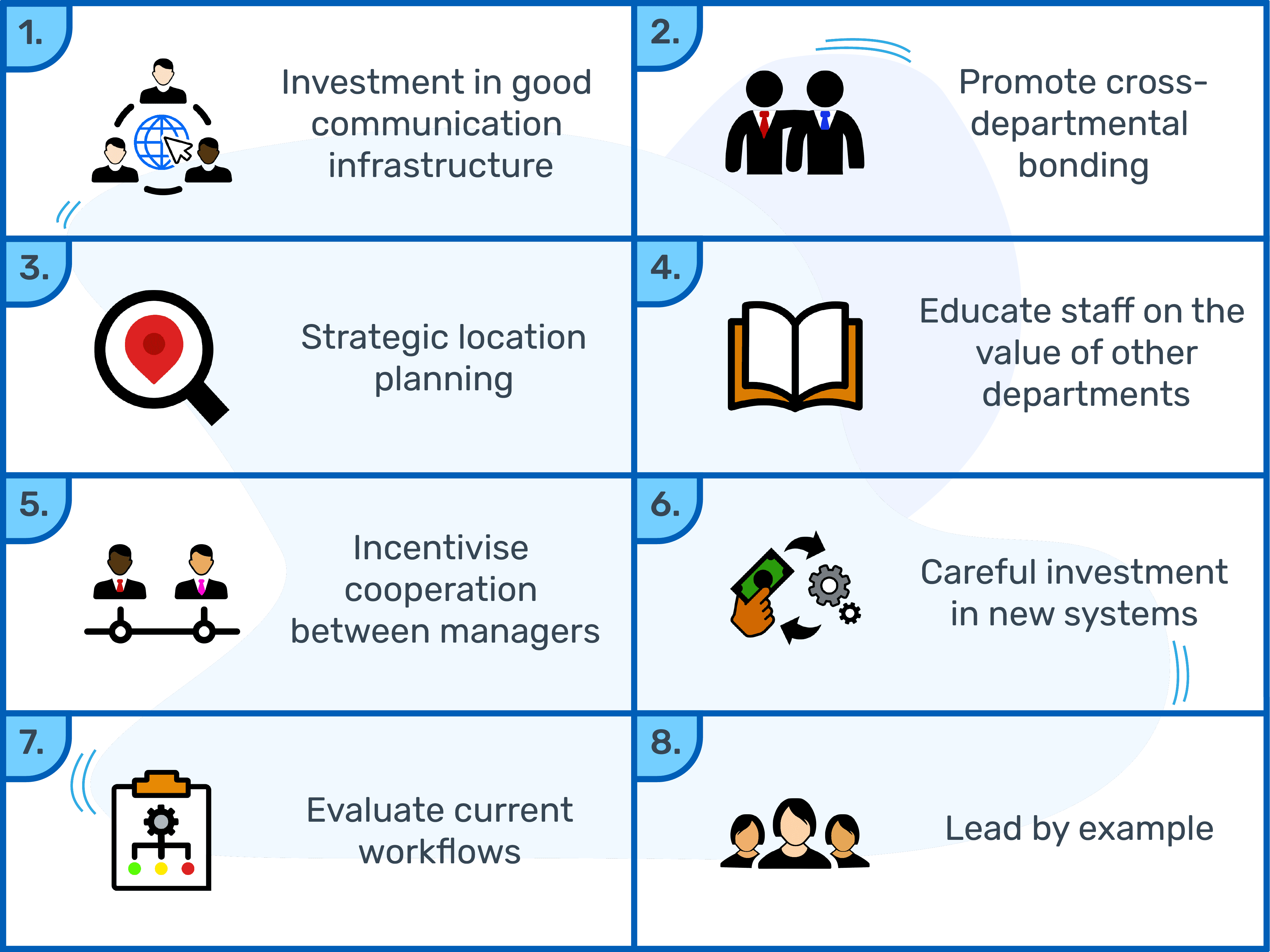8 ways to prevent silos in businesses
1. Investment in good communication infrastructure
To avoid a breakdown in communication within a company, it has to invest in the right infrastructure. It could be something as simple as a Zoom subscription or a highly sophisticated intranet system with its own private message app built in. The fact is, staff can't avoid communication silos developing if the right tools for discussions are not provided.
2. Promote cross-departmental bonding
Building relationships between departments is a hugely powerful technique to avoid a silo in business. It helps communication and information transfer between employees. Something as simple as having a mixed-department Christmas social can really help. A more structured approach could be to have cross-departmental training programmes.
3. Strategic location planning
This can be a particularly tricky one and it can vary massively depending on what stage of its lifecycle a company is at. When expanding your office space, think about the layout for staff and their proximity to each other. Geography has enormous potential to create business silos. If the business is at a level where it needs another office in a different location, consider how they will communicate with one another. Put policies and systems in place to maintain lines of dialogue.
4. Educate staff on the value of other departments
If training is being given out to specific departments, make sure it reflects well and references other areas of the company. Include case study examples of certain employees and their successes. Anything to convey the message of a team effort.
5. Incentivise cooperation between managers
As I mentioned before, a silo in business can often leak in from the top down. To avoid this friction and an "each to their own" approach from managers, set them shared targets. Avoid personal aims and encourage teamwork. Reward success if departments work together to achieve a common goal for the company.
6. Careful investment in new systems
When investing in new company infrastructure/software, a key part of the discussion needs to be how it fits in with the current systems. Ask any new provider about APIs, which are how software communicates with each other. When enrolling new customers on our OneTimePIM software which organises product information, we always discuss how it will work with their current systems.
7. Evaluate current workflows
Using the other advice in this article, consider if any practices you have in place at the moment are conducive to a silo mentality. Are there systems which don't communicate with each other well? Are the departments geographically and socially separated from one another? Look to change aspects which you think might be causing business silos.
8. Lead by example
The quickest and easiest change you can make right now is with yourself. Are you protective over your data that could be of use to other departments? Are you in competition with another manager? Evaluate your own approach and lead by example. See if you could communicate and share information better.
Avoiding silos in business is a crucial part of progression and expansion. It's something all managers need to be aware of. The bigger the company the more at risk they are of a business silo developing and steps need to be taken to avoid one popping up. We help businesses end their information silos with our Product Information Management (PIM) software, designed to make the management and distribution of product data amongst staff and customers seamless. You can learn all about it right here on our website, or book a no-obligation free demo to see if it could help you.
